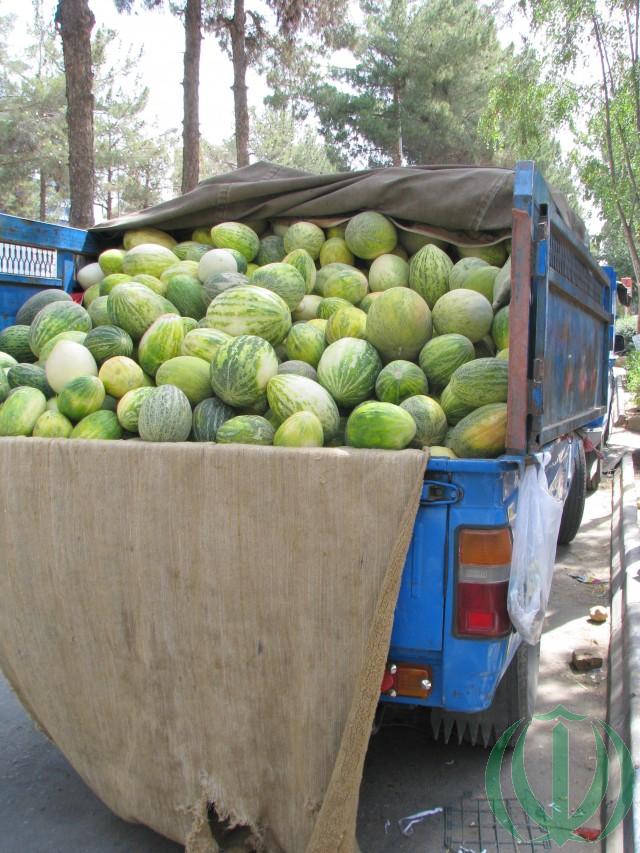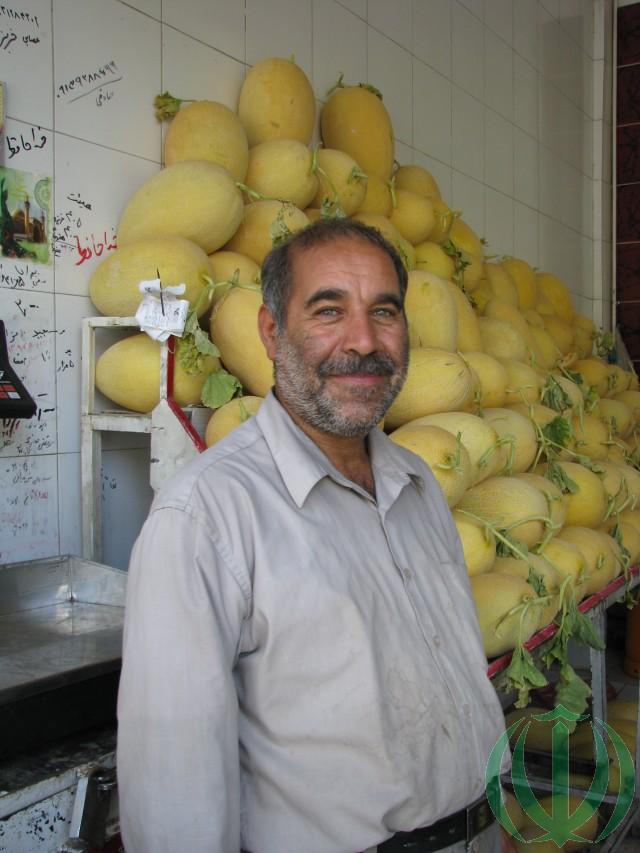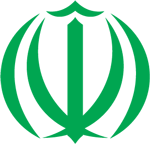Родиной дыни являются Иран и Средняя Азия. Её выращивают в этих краях с глубокой древности. Плоды дыни здесь очень любят и ценят. А вкусовые качества местных дынь – высочайшие.
Крестьяне Ирана ежегодно собирают свыше 2-х миллионов тонн этих благоухающих цветами и мёдом плодов, делая страну вторым в мире их производителем. Под дынями здесь занято свыше 80 тысяч гектаров поливных земель.

Уже в новогодние праздники по иранскому календарю (с 20-х чисел марта) начинается сбор ранних сортов дынь на юге страны – в провинции Хузестан. С наступлением лета дыни собирают севернее – в провинциях Фарс, Тегеран, Казвин, Кум, Керман, Голестан и других.
Сами иранцы говорят, что лучшие иранские дыни созревают в провинции Хорасан-Резави. Поэтому здесь и самые большие плантации дынь.
Качество иранских дынь известно во многих странах – их закупают коммерсанты из 22 государств мира. Количество покупателей неуклонно растёт, поэтому площадь дынных плантаций Ирана в ближайшие годы будет увеличена ещё на 20%.


Сортов дынь в Иране много. Они отличаются размерами, цветом кожуры и мякоти, лёжкостью, ароматом и даже вкусом. Есть более или менее сладкие дыни. Но общее свойство всех сортов дынь – способность снимать усталость.

Путешествуе по Ирану весною и в начале лета, а также осенью, мы с удовольствием дегустировали дыни разных сортов и в разных регионах. Забавный случай был у нас в первую поездку в Иран. Мы купили сразу несколько дынь всех увиденных сортов и разложили их на полу в гостиничном номере. Утром ушли гулять до самого вечера. А когда вернулись – были в восторге от райского аромата спелых дынь, наполнявшим комнату.


В городах Ирана, особенно в Исфахане, очень популярны свежевыжатые фруктовые и овощные соки. В том числе и дынный. На ваших глазах ломтики дыни превращаются в густой и благоухающий напиток. По желанию в него добавят кубики льда. Или мороженное, что особенно любят прекрасные иранки. Большой стакан дынного сока (300 мл) стоит до 30-35 тысяч реалов (0,8-0,9 евро).
В городе Бирджанд, центре провинции Южный Хорасан, мы набрели на рапродажу керамики замечательного мастера-керамиста, господина Али Парепура. Одним из его изделий были оригинальные копилки для монет в форме дыни. Мы так эмоционально восхищались ими, что добрый мастер одну из них нам подарил. Сегодня эта дыня-копилка хранится Иранской библиотеке общества “Барадаран-наме”, напоминая читателям о добром и вкусном “дынном” Иране.


…У нас – январь. Лежит снег и дует холодный ветер. А на юге далёкого и доброго Ирана ярко светит солнце и колышется ласковое море. Куда нас приглашает Пуя Баяти….
Iranian melons
Homeland melons are Iran and Central Asia. It is grown in these parts since ancient times. Melon fruits are very loved and appreciated here. A taste of local melons – the highest.
Iranian peasants annually collect more than 2 million tons of these fragrant flowers and honey, making the country the second largest producer in the world. More than 80,000 hectares of irrigated land are occupied here under melons.
Already in the New Year holidays, according to the Iranian calendar (from the 20th of March) begins the collection of early varieties of melons in the south of the country – in Khuzestan province. With the onset of summer melons are collected to the north – in the provinces of Fars, Tehran, Qazvin, Kum, Kerman, Golestan and others.
The Iranians themselves say that the best Iranian melons ripen in the province of Khorasan-Rezavi. Therefore here and the largest plantations of melons.
Quality of Iranian melons is known in many countries – they are bought by businessmen from 22 countries of the world. The number of buyers is steadily growing, so the area of melon plantations of Iran in the coming years will be increased by another 20%.
There are a lot of melons in Iran. They differ in size, skin color and pulp, liquefaction, aroma and even taste. There are more or less sweet melons. But the common property of all sorts of melons is the ability to relieve fatigue.
Traveling in Iran in the spring and early summer, as well as in the autumn, we gladly tasted melons of different varieties and in different regions. A funny incident was our first trip to Iran. We bought just a few melons of all the varieties seen and laid them on the floor in the hotel room. In the morning they went for a walk until the evening. And when they returned, they were delighted with the paradisiacal aroma of ripe melons filling the room.
In the cities of Iran, especially in Esfahan, freshly squeezed fruit and vegetable juices are very popular. Including melon. Before your eyes, the melon slices turn into a thick and fragrant drink. If desired, ice cubes will be added to it. Or ice cream, which is especially fond of the beautiful Iranians. A large glass of melon juice (300 ml) costs up to 30-35 thousand reais (0.8-0.9 euros).
In the city of Birjand, the center of the province of Southern Khorasan, we came across the sale of ceramics of a remarkable ceramist master, Mr. Ali Parepur. One of his products was the original piggy bank for coins in the form of melons. We so emotionally admired them that a good master gave us one of them. Today this melon-piggy bank is kept by the Iranian library of the “Baradaran-name” society, reminding the readers of the good and tasty “melon” Iran.
… We have a January. There is snow and a cold wind is blowing. And in the south of far and good Iran the sun shines brightly and the tender sea waves. Where we are invited by Puja Bayati ….



0 Comments